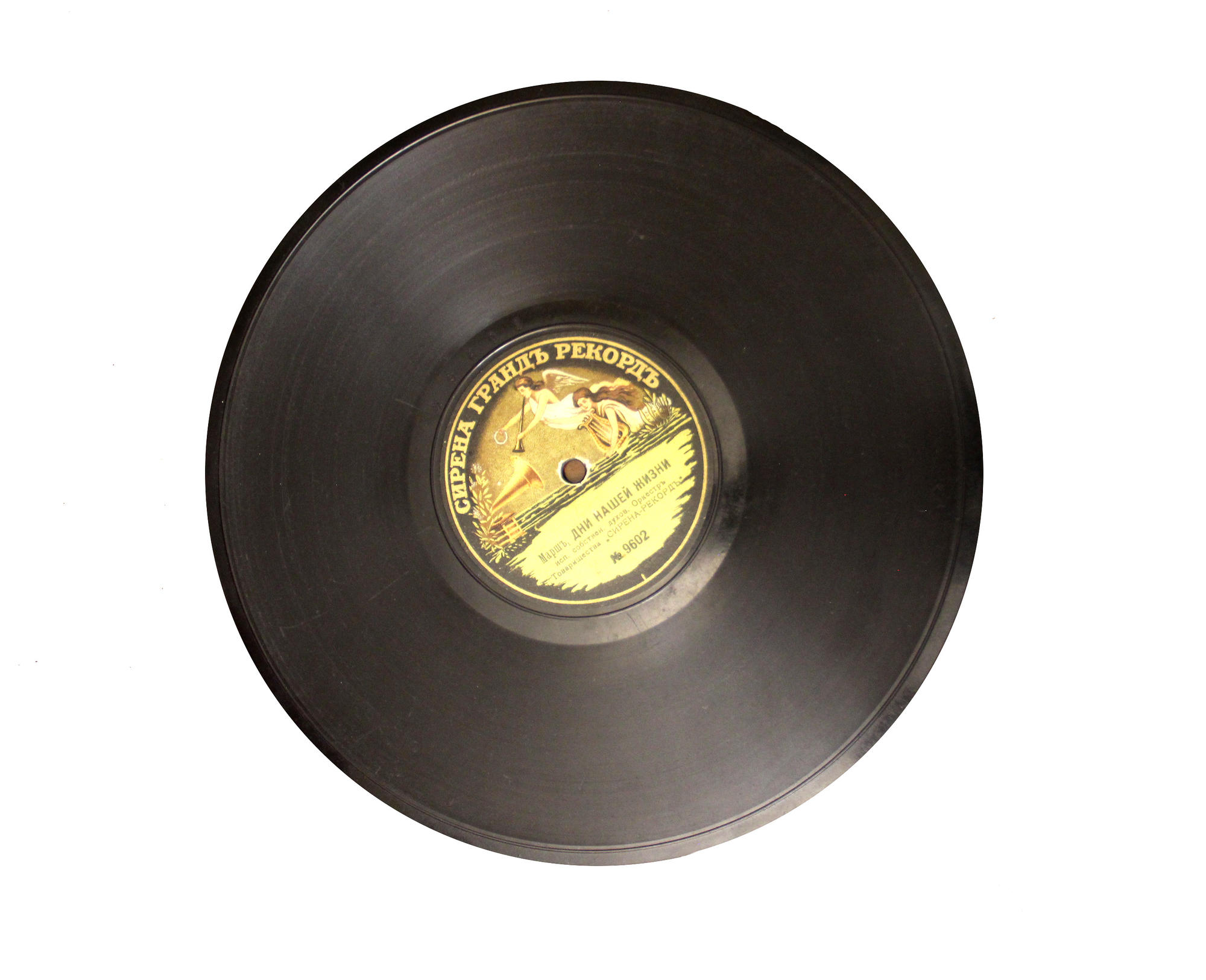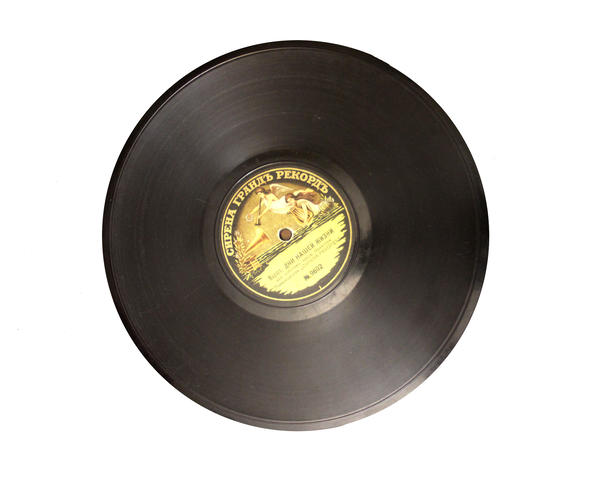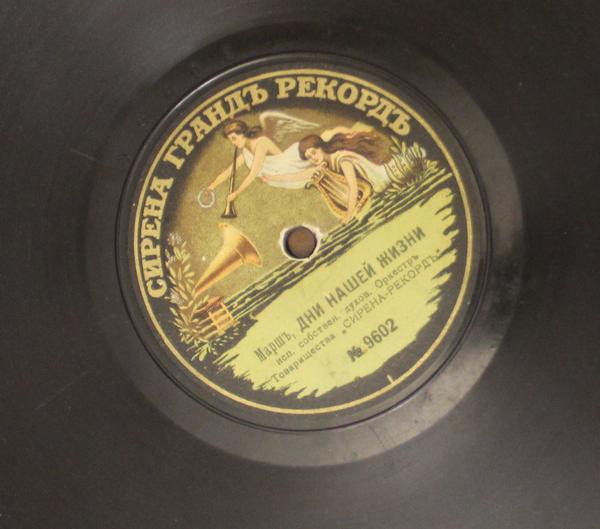The gramophone was independently designed in 1877 by two inventors at once: Charles Cros and Thomas Edison. Later, American inventor Emil Berliner learned about Charles Cros’ work, and improved the gramophone by replacing the recording cylinders with discs. He obtained a patent for it in 1887.
Gramophone Record
Время создания
1910
Размер
25.2 cm in diameter
Техника
Shellac
Выставка
0
Открыть в приложении#1
Gramophone Record
#4
#6
The first gramophone records were made of zinc. Over time, the material was replaced with shellac, a natural resin. The main advantage of such plates was that they were produced on a hot press in large quantities. This accelerated the process significantly and reduced its cost.
#3
The museum’s collection treasures a record made by the Siren Record partnership’s own brass band. The company arose from the firm Intona, which earned its first capital on pirated copies of records from larger producers. However, appearing under the brand name of Siren Record, the company completely switched to legal production.
#7
The reformed company settled in Warsaw in 1908-1909, opening a small enterprise. Very soon after that, in 1911, Sirena Record built a new state-of-the-art factory. The building became an example of the technical equipment of the time. 76 presses installed in the pressing department produced up to 16 thousand gramophone records per day. In addition, the “Siren” carefully monitored the popular repertoire, thus producing smash hits more often than its competitors.
#8
One side of the record represented in the museum features a popular march Days of Our Life by Lev Chernetsky, a military bandmaster of the Don Cossack Regiment, composer and conductor. The melody for this march was based on the famous folklore song: A big crocodile walked the streets. The song had many verses, which mockingly described what the crocodile did to the enemies of Russia in the First World War. The tune was so simple and catchy that almost everyone knew it; this was why it served as a basis for the march that became the official march of the 129th Bessarabian Infantry Regiment of the Russian Imperial Army.
#9
On the other side, the light and melodious waltz Broken Life, composed by Russian and Soviet military musician Max Küss.
#10
The last Siren Record catalogue was published in 1939. In the summer of the same year, the company closed. And after the German occupation, the rest of the recording studios were closed in Warsaw. Over the entire period of its existence, Siren Record has recorded about 14 thousand musical compositions.
#11
читать дальшескрыть
00:00
00:00
1x
Gramophone Record
Время создания
1910
Размер
25.2 cm in diameter
Техника
Shellac
Выставка
0
Открыть в приложении
Поделиться




